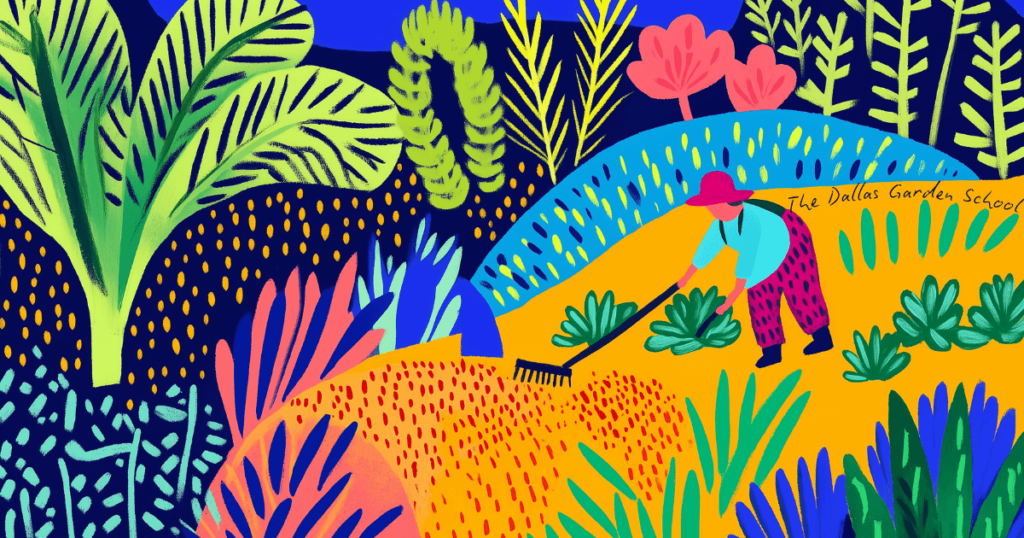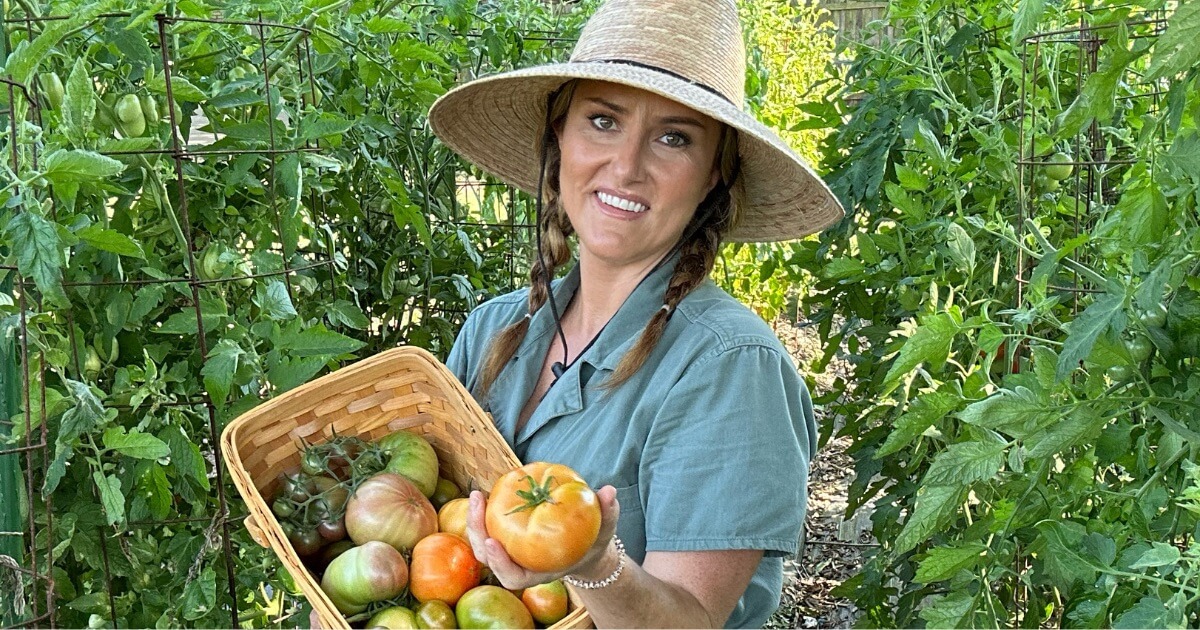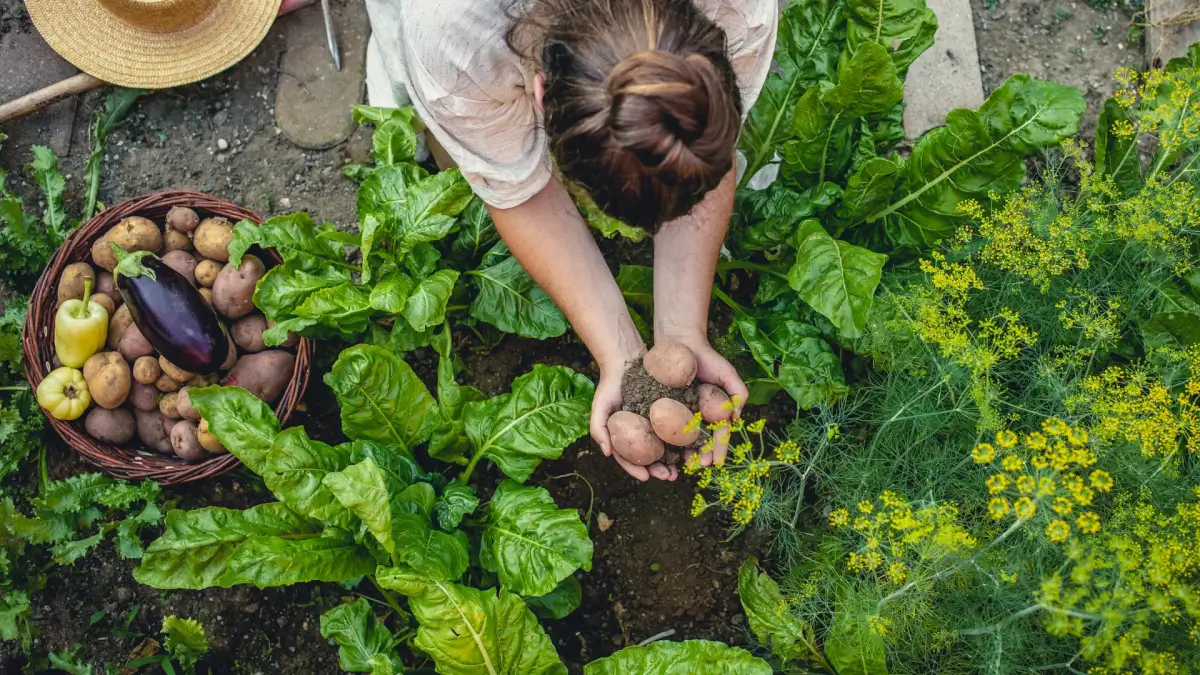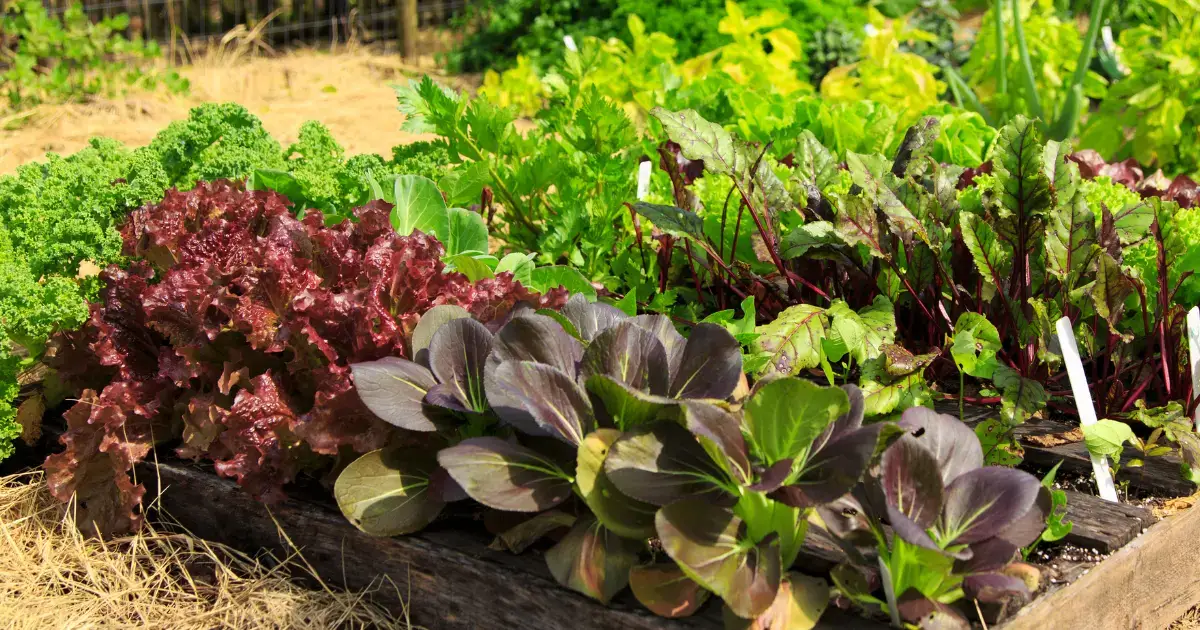
I prefer to start transplants by seed indoors because it gives me more control, but many gardeners prefer direct-sowing because it is less labor-intensive and requires fewer supplies.
Germination rates are often lower when direct-sowing because seeds can be easily washed away by rain, accidentally planted too deeply, or be disturbed by animals, but there are some things that you can do to maximize your chances of direct-sowing success.
Here’s what you can do to improve germination for direct-sown seeds
- Prepare soil before planting.
Soil in a well-prepared garden bed should be loose, well-draining, and free of large clumps, allowing seeds to make proper contact with the soil and absorb necessary moisture.
After mixing compost into my garden beds to revitalize soil between crops, I will rake the soil out as smooth and flat as possible. Sometimes I’ll even spread a thin layer of compost on top of the soil to create an even smoother surface.
Getting the soil completely flat is important. Uneven soil can reduce germination rates and lead to water pooling. - Plant seeds at the proper depth.
The depth at which seeds are sown is critical. Most seed packets provide specific recommendations, which should be adhered to rigorously.
Planting seeds too deeply can impede their ability to reach the soil surface and slow germination rates, while shallow planting may result in seeds that dry out too quickly.
As a general rule, seeds should be planted at a depth of 2 to 3 times their diameter, but always follow directions on seed packet. - Keep soil consistently moist. Never let it completely dry out, if possible.
After sowing, make sure that the soil remains evenly moist but not waterlogged.
All seeds planted in August will require dailywatering , sometimes even twice-dailywatering .
Once seedlings are around 4 inches tall, you can mulch around the plants which will reducewatering needs. - Plant at the right times and monitor soil temperature.
Optimal soil temperature is critical for good germination rates. Soil that is too cold or too hot can greatly slow or completely inhibit seed germination.
Follow the planting schedules outlined in our planner to stay on track. You can also look up optimal germination temperatures for any plant with a quick Google search. - Thin seedings once they have their true leaves.
The first leaves to emerge after germination are “seed leaves”. The second set of leaves to emerge after germination are the the “true leaves”.
Once seedlings have their first set of true leaves, you must thin the seedlings to the proper spacing indicated on the seed packet.
Many people resist this process because they don’t want to get rid of any seedlings, but failure to thin results in weak plants with reduced production.
Crowded plants compete with each other for light, nutrients, and moisture. If you leave two plants too close together, you’ll end up with two unhealthy plants instead of one really strong plant.
To thin seedlings, use snips to cut out the seedling just above the soil surface. Pulling out seedlings can disturb the delicate root systems of the remaining seedling.
Speaking of starting plants by seed, now is the time to start cold hardy annual flowers by seed indoors for a fall transplanting. Don’t worry you missed yesterday’s Blossom Brilliance class because the class replay is already available. Snag it here.

Here are some things you can direct-sow in your North Texas garden in early August:
- Celosia
- Amaranth
- Sunflower
- Zinnia
- Sweet Corn
- Cucumbers
- Okra
- Small Pumpkins (before Aug 15)
- Summer Squash
- Winter Squash
Have a great day!
CWL
- Can Eating Tomatoes Help Prevent Weight Gain? New Study Says Yes - May 25, 2025
- New to Gardening? Join Our Step-by-Step Beginner Gardening Class - April 24, 2025
- Why “Intensive” Gardening is Not Good - March 9, 2025



